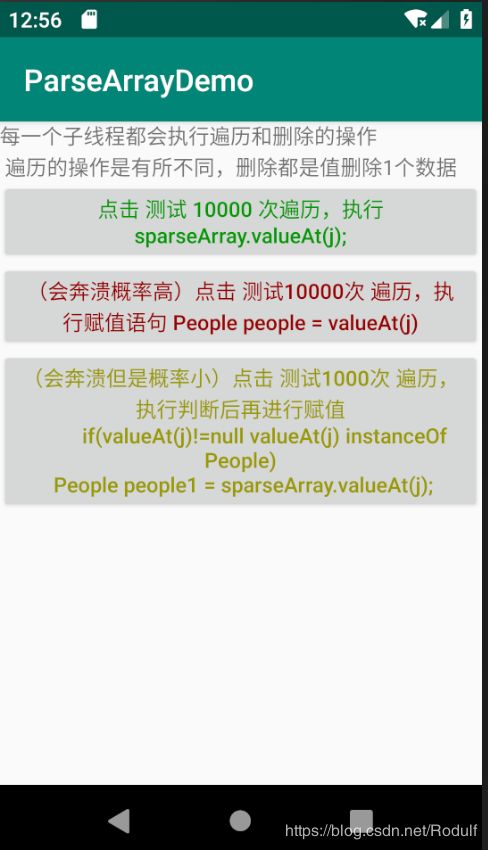- Android图书借阅系统完整App开发教程(源码+数据库)
本文还有配套的精品资源,点击获取简介:本教程深入介绍了基于Android平台的图书借阅系统App开发过程,涵盖了从UI设计、网络通信到数据库操作的全面实践。项目包含源码和数据库文件,让学生能够通过实际案例学习并掌握Android应用开发的核心技术。本App具有预约借书、书籍评论、图书推荐和逾期提醒等功能,要求开发者熟悉Java语言和Android系统,以及实现后端逻辑和数据存储。此项目是一个宝贵的
- APatch - 新一代Android内核Root解决方案
项目简介APatch是一款创新的Android内核级Root解决方案,具有以下核心特点:基于内核补丁技术实现Root权限管理支持类似Magisk的模块系统(APM)提供内核模块功能(KPM),允许向内核注入任意代码兼容Android内核版本3.18-6.1仅支持ARM64架构设备APatch依赖于KernelPatch核心引擎,其UI界面和模块系统部分代码源自KernelSU。功能特性核心功能内核
- 解决Flutter运行android提示Deprecated imperative apply of Flutter‘s Gradle plugins
旺仔大牛
gradleflutterandroidgraldebuildscriptdependenciesprepositories
文章目录出现场景解决方案编辑android/settings.gradle编辑android/build.gradle重新定义库变量编辑android/app/build.gradle删除fluttetRoot和plugin字段添加plugins块修改dependencies出现场景ado@adodeMacBook-Airapp_demo%flutterrun--profileLaunchingl
- Android Fragment 嵌套使用
Lrxc
1setUserVisibleHint只有fragment与viewpager配合使用,才会调用3onHiddenChanged的回调时机当使用add()+show(),hide()跳转新的Fragment时,旧的Fragment回调onHiddenChanged(),不会回调onStop()等生命周期方法,而新的Fragment在创建时是不会回调onHiddenChanged(),这点要切记。
- Android NFC 技术详解及 IC 卡读取实现
Monkey-旭
microsoftNFCIC卡androidjava
NFC(NearFieldCommunication,近场通信)作为一种短距离高频无线通信技术,在移动支付、身份识别、数据传输等场景中应用广泛。在Android设备上,NFC功能可以实现与IC卡、标签、其他NFC设备的交互,其中“读取IC卡”是最常见的需求之一。本文将从技术原理到实际开发,全面讲解AndroidNFC技术及IC卡读取实现。一、AndroidNFC技术基础1.1什么是NFC?NFC是
- Gradle:Cannot add task ‘clean‘ as a task with that name already exists.
海阔天空6688
开发工具Androidgradleandroid
Gradle编译项目报错:Cannotaddtask'clean'asataskwiththatnamealreadyexists.提示的是gradle中的clean方法已经存在了,冲突了,把项目中build.gradle的clean方法注释掉或者删掉重新编译就也可以了。buildscript{repositories{}dependencies{classpath'com.android.too
- Android高级技能(一):CI/CD与自动化构建
半夜偷你家裤衩子
Androidandroidci/cd自动化
摘要当应用开发进入成熟阶段,手动进行构建、测试和发布将变得效率低下且容易出错。持续集成(CI)和持续部署(CD)是现代化软件开发的标准实践,能极大地提升开发效率和应用质量。本文将深入探讨如何在Android项目中实施CI/CD流程,内容涵盖Git工作流、Gradle高级自动化以及如何利用Jenkins或GitHubActions搭建自动化流水线。目录CI/CD核心理念什么是持续集成(Continu
- Android源码导入Android Studio
CYRUS STUDIO
androidandroidstudioide
版权归作者所有,如有转发,请注明文章出处:https://cyrus-studio.github.io/blog/前言需要先把Android源码编译一遍然后执行下面指令就可以导入android源码了关于Android源码编译可以参考这篇文章【LineageOS源码下载和编译(XiaomiMi6X,wayne)】。生成android.ipr文件1.进入到下面的目录cd./development/to
- 【RK3576】【Android14】摄像头&MIPI开发调试
获取更多相关的【RK3576】【Android14】驱动开发,可收藏系列博文,持续更新中:【RK3576】Android14驱动开发实战指南简介RK3576支持摄像头相关功能:MIPIDCPHYCSIRX:一路4LaneDPHY或者一路3TriosMIPICPHY信号输入,通过80pin座子接入。MIPIDPHYCSIRX:两路4LaneDPHY信号输入,均支持可拆分成2x2Lane,通过80pi
- [Android]在游戏的SurfaceView中获取输入与使用EditText,Spinner等控件的方法
游戏中有时候需要玩家输入信息,选择信息。在普通的Android程序里面,可以使用EditText,Spinner等输入控件方便地实现这些功能。但是,一般游戏是使用SurfaceView,所有的东西都是自己绘制。所以加入控件有些不伦不类。而且SurfaceView属于View,本身是不能追加的控件的。我在网络上找了许多文件,一般来说提到了一个方法在外面使用布局。但说到底还是不伦不类。而且使游戏的UI
- Kotlin泛型之 循环引用泛型(A的泛型是B的子类,B的泛型是A的子类)
IDE(编辑器)报错循环引用泛型是我起的名字,不知道官方的名字是什么。这个问题是我在定义Android的MVP时提出来的。具体是什么样的呢?我们看一下我的基础的MVP定义:interfaceIPresenter{fungetView():V}interfaceIView{fungetPresenter():P}这里我定义了一个View和Presenter的接口,但是实际上这两个东西现在没什么关联。
- Android gradle plugin agp8.6.1发布时间
yzpyzp
androidgradle
Androidgradlepluginagp8.6.1发布时间AndroidGradlePlugin(AGP)的版本8.6.1是在2023年发布的。具体来说,它是在2023年4月发布的。这个版本的更新包括了多个重要的改进和修复,旨在提升开发者在Android开发过程中的体验和效率。主要更新包括:性能改进:AGP8.6.1对构建性能进行了优化,特别是在处理大型项目时。这有助于减少构建时间,提高开发效
- Kotlin 集合操作:简化移动开发中的数据处理
移动开发前沿
移动端开发宝典kotlin开发语言androidai
Kotlin集合操作:简化移动开发中的数据处理关键词:Kotlin集合、数据处理、函数式编程、Android开发、集合操作符摘要:在移动开发中,数据处理是最常见的需求之一——从网络获取列表、过滤无效数据、转换显示格式、统计汇总……这些操作如果用传统方式实现,往往需要写大量循环和条件判断。Kotlin作为Android开发的“第一语言”,提供了一套简洁到“令人发指”的集合操作符(如filter、ma
- 2.锁定Activity方向
Jennyni1122
2.1问题应用程序中的某个Activity不能旋转,或是旋转需要应用程序代码更直接的干预。2.2解决方案(APILevel1)在AndroidManifest.xml文件中可以用静态声明将每个Activity的方向锁定为横向或纵向。这个声明只能用于标签,所有不能一次性解决整个应用程序。只需要在元素中加上android:screenOrientation属性,无论设备处于什么位置,Activity都
- 系统编译中LOCAL_CFLAGS的用法
LOCAL_CFLAGS+=-DXXX,相当于在所有源文件中增加一个宏定义#defineXXXeg:在Android.mk中增加ifeq($(PRODUCT_MODEL),XXX_A)LOCAL_CFLAGS+=-DBUILD_MODELendif即能在所编译的Cpp文件中使用:#ifdefBUILD_MODEL....#endif
- 小谈相机的学习过程
前言博主本人并非专职相机开发,还涉及系统的其他几个模块,虽然都属于owner,但是都还在学习探索的一个过程,自认为掌握还不够细致,此篇文章仅梳理,总结,印证自己近五年相机模块的一个学习过程,以及对后续相机学习的一个方向,讲的也是比较宽泛,后续有空的话会考虑挑几个实用且常见的一些应用流程详细讲一下,但也希望能挤出时间来,博主实在太忙了~1.CameraLV1我最早接触的相机肯定是高通Android系
- android分区设计,构建 ODM 分区 | Android 开源项目 | Android Open Source Project
Android10支持使用Android构建系统构建/odm分区。ODM分区简介原始设计制造商(ODM)能够为其特定设备(开发板)自定义系统芯片(SoC)供应商板级支持包(BSP)。这样,他们就可以为板级组件、板级守护进程或者其基于硬件抽象层(HAL)的自有功能实现内核模块。他们可能还需要替换或自定义SoC组件。在之前的Android版本中,对于使用相同SoC(或使用同一系列中的不同SoC)的设备
- android mtk camera
小太阳。熔泪
cameraandroid
Android系统Camera篇本项目12M的sensor,让其可以拍48M的照片IPEQCFA本项目12M的sensor,让其可以拍48M的照片具体有两种方案IPE方式和QCFAIPE该方式较为简单。实在createCaptureSession请求将48M的分辨率传到底层,让其可以创建该摄像头的stream,流程为设置48M的分辨(不要从StreamConfigurationMap获取分辨率),
- Android12.0 需求开发篇之OTA AB升级篇章一
洋仔518
android
1.需求描述RK3568平台对应项目上要求使能AB分区,这样同样OTA也需要能够支持AB分区升级,RK平台默认是不给打开AB分区的,AB分区是单分区的进一步优化模式其优点如下:
- MTK Camera HAL 与 FeaturePipe 架构解析:从硬件抽象到功能管线的工程落地路径
MTKCameraHAL与FeaturePipe架构解析:从硬件抽象到功能管线的工程落地路径关键词MTKCameraHAL、FeaturePipe架构、联发科影像系统、CAM-HAL3、PipelineModel、流控制管理、Node架构、Buffer管理、AndroidCameraFramework摘要MTK的Camera系统在Android平台下采用高度模块化的HAL与FeaturePipe架
- Android系统分区理解及分区目录细解
···Android分区:System分区,Data分区,Cache分区,SDCard分区.在Adb中使用df来查看分区情况。1跨分区不能用MV命令来拷贝。但是可以用CP命令。如PWD,当前目录为:/data/local/tmp。此目录下有个busybox和1.txt文件。则利用CP命令拷贝如下:./busyboxcp1.txt/system.2Android的用户组有System,root,sh
- iOS如何查看电池容量?理解系统限制与开发者级能耗调试方法
2501_91590906
ios小程序uni-appiphoneandroidwebviewhttps
在很多Android设备中,查看电池的容量、温度、电压甚至充放电速度,几乎不需要任何操作。但在iOS设备上,这些信息却要么不可见,要么非常隐晦。对用户来说,“电池最大容量87%”是一句看似清晰却又缺乏上下文的信息;对开发者来说,更需要知道的是:“我的App是否在某些设备上引发了异常耗电?”这篇文章不只是告诉你如何查电池容量,更是帮助你理解iOS的能耗监测边界,和如何在苹果生态内构建安全、有效的电池
- flutter Boost android页面跳转到 Flutter 页面
戸田有希
flutterandroid
FlutterBoost:从Android跳转到Flutter页面本文将详细介绍如何使用FlutterBoost在Android应用程序中实现页面跳转到Flutter页面。FlutterBoost是一个可以帮助你在不同平台之间(Android和iOS)进行无缝跳转的工具。一、实现流程首先,让我们明确一下实现的流程。整个流程可以归纳为下表:步骤说明1创建FlutterModule2集成Flutter
- Flutter 入门指南:从基础到实战
介绍FlutterFlutter是Google开发的开源移动应用软件开发工具包(SDK),用于快速在iOS和Android上构建高质量的原生界面。Flutter的一大特点是其跨平台功能,让开发者能够使用同一套代码基础为两个平台构建应用。这一点通过Flutter的核心设计理念“一次编写,处处运行”得以实现。Flutter使用Dart语言进行编程,这是一种由Google开发的现代语言,旨在提供高性能和
- 通过外部链接启动 Flutter App(详细介绍及示例)
飞川001
Fluttterflutterxcodeandroidstudio
通过外部链接启动FlutterApp(firebase_dynamic_links和app_links)详细介绍通过外部链接启动flutterApp的使用及示例在我们的APP中,经常有点击链接启动并进入APP的需求(如果未安装跳转到应用商店)。Android通过deeplink或者applink(是deeplink的增强版),iOS通过urlschema,可以打开对应的app,因此我们需要对我们的
- Android OkHttp使用和源码详解,flutter跳转到appstore
m0_64603743
程序员面试android移动开发
.cache(cache);//设置缓存Requestrequest=newRequest.Builder().url(url).build();builder.build().newCall(request).enqueue(newCallback(){@OverridepublicvoidonFailure(Callcall,IOExceptione){}@Overridepublicvoid
- Flutter Android 实现 APP跳转
leftstrange
Flutter基础学习flutterandroidjava
一、APP实现被打开创建URLscheme修改/app/src/mian/AndroidManifest.xml配置配置scheme="xxxxxx"android:host="xxxxxx"android:pathPrefix="/xxxxxx"重新编译APP;注册完成,APP已经可以被第三方调用了;二、打开第三方APP安装插件:url_launcher:^5.7.10launchURL()as
- Android8.0一些系统数据库的变更总结
留给时光吧
1.SettingsProvider之前的一些系统设置内容如亮度、音量大小等都存储在settings.db这个数据库中,但在8.0上数据库不见了。在8.0上都存在几个xml文件中了,其实从6.0开始就已经开始了这种操作,只不过6.0上并没有删除原始数据库,从7.0开始系统删除了原始数据库。简单看一下源码:android\frameworks\base\packages\SettingsProvid
- Tinker源码分析(一):TinkerApplication
俞其荣
本系列Tinker源码解析基于Tinkerv1.9.12自动生成TinkerApplication接入Tinker第一步就是改造Application。官方推荐是利用@DefaultLifeCycle动态生成Application@DefaultLifeCycle(application="tinker.sample.android.app.SampleApplication",flags=Sha
- Android7以上的手机通过fiddler抓包
春暖花开จุ๊บL
fiddler前端测试工具
设置以及安装步骤0,要求手机要先root1,安装fiddler,不赘述。不熟悉的可以安装中文版。fiddler中文版下载地址,并且把fiddler的证书文件导出到桌面上。2,安装windows版本的openssl。下载地址:OpenSSL下载地址记录好安装路径。3,到openssl的安装路径\bin目录下。shift+右键运行命令行。把fiddler的证书文件剪切到bin目录下。命令行执行open
- ios内付费
374016526
ios内付费
近年来写了很多IOS的程序,内付费也用到不少,使用IOS的内付费实现起来比较麻烦,这里我写了一个简单的内付费包,希望对大家有帮助。
具体使用如下:
这里的sender其实就是调用者,这里主要是为了回调使用。
[KuroStoreApi kuroStoreProductId:@"产品ID" storeSender:self storeFinishCallBa
- 20 款优秀的 Linux 终端仿真器
brotherlamp
linuxlinux视频linux资料linux自学linux教程
终端仿真器是一款用其它显示架构重现可视终端的计算机程序。换句话说就是终端仿真器能使哑终端看似像一台连接上了服务器的客户机。终端仿真器允许最终用户用文本用户界面和命令行来访问控制台和应用程序。(LCTT 译注:终端仿真器原意指对大型机-哑终端方式的模拟,不过在当今的 Linux 环境中,常指通过远程或本地方式连接的伪终端,俗称“终端”。)
你能从开源世界中找到大量的终端仿真器,它们
- Solr Deep Paging(solr 深分页)
eksliang
solr深分页solr分页性能问题
转载请出自出处:http://eksliang.iteye.com/blog/2148370
作者:eksliang(ickes) blg:http://eksliang.iteye.com/ 概述
长期以来,我们一直有一个深分页问题。如果直接跳到很靠后的页数,查询速度会比较慢。这是因为Solr的需要为查询从开始遍历所有数据。直到Solr的4.7这个问题一直没有一个很好的解决方案。直到solr
- 数据库面试题
18289753290
面试题 数据库
1.union ,union all
网络搜索出的最佳答案:
union和union all的区别是,union会自动压缩多个结果集合中的重复结果,而union all则将所有的结果全部显示出来,不管是不是重复。
Union:对两个结果集进行并集操作,不包括重复行,同时进行默认规则的排序;
Union All:对两个结果集进行并集操作,包括重复行,不进行排序;
2.索引有哪些分类?作用是
- Android TV屏幕适配
酷的飞上天空
android
先说下现在市面上TV分辨率的大概情况
两种分辨率为主
1.720标清,分辨率为1280x720.
屏幕尺寸以32寸为主,部分电视为42寸
2.1080p全高清,分辨率为1920x1080
屏幕尺寸以42寸为主,此分辨率电视屏幕从32寸到50寸都有
适配遇到问题,已1080p尺寸为例:
分辨率固定不变,屏幕尺寸变化较大。
如:效果图尺寸为1920x1080,如果使用d
- Timer定时器与ActionListener联合应用
永夜-极光
java
功能:在控制台每秒输出一次
代码:
package Main;
import javax.swing.Timer;
import java.awt.event.*;
public class T {
private static int count = 0;
public static void main(String[] args){
- Ubuntu14.04系统Tab键不能自动补全问题解决
随便小屋
Ubuntu 14.04
Unbuntu 14.4安装之后就在终端中使用Tab键不能自动补全,解决办法如下:
1、利用vi编辑器打开/etc/bash.bashrc文件(需要root权限)
sudo vi /etc/bash.bashrc
接下来会提示输入密码
2、找到文件中的下列代码
#enable bash completion in interactive shells
#if
- 学会人际关系三招 轻松走职场
aijuans
职场
要想成功,仅有专业能力是不够的,处理好与老板、同事及下属的人际关系也是门大学问。如何才能在职场如鱼得水、游刃有余呢?在此,教您简单实用的三个窍门。
第一,多汇报
最近,管理学又提出了一个新名词“追随力”。它告诉我们,做下属最关键的就是要多请示汇报,让上司随时了解你的工作进度,有了新想法也要及时建议。不知不觉,你就有了“追随力”,上司会越来越了解和信任你。
第二,勤沟通
团队的力
- 《O2O:移动互联网时代的商业革命》读书笔记
aoyouzi
读书笔记
移动互联网的未来:碎片化内容+碎片化渠道=各式精准、互动的新型社会化营销。
O2O:Online to OffLine 线上线下活动
O2O就是在移动互联网时代,生活消费领域通过线上和线下互动的一种新型商业模式。
手机二维码本质:O2O商务行为从线下现实世界到线上虚拟世界的入口。
线上虚拟世界创造的本意是打破信息鸿沟,让不同地域、不同需求的人
- js实现图片随鼠标滚动的效果
百合不是茶
JavaScript滚动属性的获取图片滚动属性获取页面加载
1,获取样式属性值
top 与顶部的距离
left 与左边的距离
right 与右边的距离
bottom 与下边的距离
zIndex 层叠层次
例子:获取左边的宽度,当css写在body标签中时
<div id="adver" style="position:absolute;top:50px;left:1000p
- ajax同步异步参数async
bijian1013
jqueryAjaxasync
开发项目开发过程中,需要将ajax的返回值赋到全局变量中,然后在该页面其他地方引用,因为ajax异步的原因一直无法成功,需将async:false,使其变成同步的。
格式:
$.ajax({ type: 'POST', ur
- Webx3框架(1)
Bill_chen
eclipsespringmaven框架ibatis
Webx是淘宝开发的一套Web开发框架,Webx3是其第三个升级版本;采用Eclipse的开发环境,现在支持java开发;
采用turbine原型的MVC框架,扩展了Spring容器,利用Maven进行项目的构建管理,灵活的ibatis持久层支持,总的来说,还是一套很不错的Web框架。
Webx3遵循turbine风格,velocity的模板被分为layout/screen/control三部
- 【MongoDB学习笔记五】MongoDB概述
bit1129
mongodb
MongoDB是面向文档的NoSQL数据库,尽量业界还对MongoDB存在一些质疑的声音,比如性能尤其是查询性能、数据一致性的支持没有想象的那么好,但是MongoDB用户群确实已经够多。MongoDB的亮点不在于它的性能,而是它处理非结构化数据的能力以及内置对分布式的支持(复制、分片达到的高可用、高可伸缩),同时它提供的近似于SQL的查询能力,也是在做NoSQL技术选型时,考虑的一个重要因素。Mo
- spring/hibernate/struts2常见异常总结
白糖_
Hibernate
Spring
①ClassNotFoundException: org.aspectj.weaver.reflect.ReflectionWorld$ReflectionWorldException
缺少aspectjweaver.jar,该jar包常用于spring aop中
②java.lang.ClassNotFoundException: org.sprin
- jquery easyui表单重置(reset)扩展思路
bozch
formjquery easyuireset
在jquery easyui表单中 尚未提供表单重置的功能,这就需要自己对其进行扩展。
扩展的时候要考虑的控件有:
combo,combobox,combogrid,combotree,datebox,datetimebox
需要对其添加reset方法,reset方法就是把初始化的值赋值给当前的组件,这就需要在组件的初始化时将值保存下来。
在所有的reset方法添加完毕之后,就需要对fo
- 编程之美-烙饼排序
bylijinnan
编程之美
package beautyOfCoding;
import java.util.Arrays;
/*
*《编程之美》的思路是:搜索+剪枝。有点像是写下棋程序:当前情况下,把所有可能的下一步都做一遍;在这每一遍操作里面,计算出如果按这一步走的话,能不能赢(得出最优结果)。
*《编程之美》上代码有很多错误,且每个变量的含义令人费解。因此我按我的理解写了以下代码:
*/
- Struts1.X 源码分析之ActionForm赋值原理
chenbowen00
struts
struts1在处理请求参数之前,首先会根据配置文件action节点的name属性创建对应的ActionForm。如果配置了name属性,却找不到对应的ActionForm类也不会报错,只是不会处理本次请求的请求参数。
如果找到了对应的ActionForm类,则先判断是否已经存在ActionForm的实例,如果不存在则创建实例,并将其存放在对应的作用域中。作用域由配置文件action节点的s
- [空天防御与经济]在获得充足的外部资源之前,太空投资需有限度
comsci
资源
这里有一个常识性的问题:
地球的资源,人类的资金是有限的,而太空是无限的.....
就算全人类联合起来,要在太空中修建大型空间站,也不一定能够成功,因为资源和资金,技术有客观的限制....
&
- ORACLE临时表—ON COMMIT PRESERVE ROWS
daizj
oracle临时表
ORACLE临时表 转
临时表:像普通表一样,有结构,但是对数据的管理上不一样,临时表存储事务或会话的中间结果集,临时表中保存的数据只对当前
会话可见,所有会话都看不到其他会话的数据,即使其他会话提交了,也看不到。临时表不存在并发行为,因为他们对于当前会话都是独立的。
创建临时表时,ORACLE只创建了表的结构(在数据字典中定义),并没有初始化内存空间,当某一会话使用临时表时,ORALCE会
- 基于Nginx XSendfile+SpringMVC进行文件下载
denger
应用服务器Webnginx网络应用lighttpd
在平常我们实现文件下载通常是通过普通 read-write方式,如下代码所示。
@RequestMapping("/courseware/{id}")
public void download(@PathVariable("id") String courseID, HttpServletResp
- scanf接受char类型的字符
dcj3sjt126com
c
/*
2013年3月11日22:35:54
目的:学习char只接受一个字符
*/
# include <stdio.h>
int main(void)
{
int i;
char ch;
scanf("%d", &i);
printf("i = %d\n", i);
scanf("%
- 学编程的价值
dcj3sjt126com
编程
发一个人会编程, 想想以后可以教儿女, 是多么美好的事啊, 不管儿女将来从事什么样的职业, 教一教, 对他思维的开拓大有帮助
像这位朋友学习:
http://blog.sina.com.cn/s/articlelist_2584320772_0_1.html
VirtualGS教程 (By @林泰前): 几十年的老程序员,资深的
- 二维数组(矩阵)对角线输出
飞天奔月
二维数组
今天在BBS里面看到这样的面试题目,
1,二维数组(N*N),沿对角线方向,从右上角打印到左下角如N=4: 4*4二维数组
{ 1 2 3 4 }
{ 5 6 7 8 }
{ 9 10 11 12 }
{13 14 15 16 }
打印顺序
4
3 8
2 7 12
1 6 11 16
5 10 15
9 14
13
要
- Ehcache(08)——可阻塞的Cache——BlockingCache
234390216
并发ehcacheBlockingCache阻塞
可阻塞的Cache—BlockingCache
在上一节我们提到了显示使用Ehcache锁的问题,其实我们还可以隐式的来使用Ehcache的锁,那就是通过BlockingCache。BlockingCache是Ehcache的一个封装类,可以让我们对Ehcache进行并发操作。其内部的锁机制是使用的net.
- mysqldiff对数据库间进行差异比较
jackyrong
mysqld
mysqldiff该工具是官方mysql-utilities工具集的一个脚本,可以用来对比不同数据库之间的表结构,或者同个数据库间的表结构
如果在windows下,直接下载mysql-utilities安装就可以了,然后运行后,会跑到命令行下:
1) 基本用法
mysqldiff --server1=admin:12345
- spring data jpa 方法中可用的关键字
lawrence.li
javaspring
spring data jpa 支持以方法名进行查询/删除/统计。
查询的关键字为find
删除的关键字为delete/remove (>=1.7.x)
统计的关键字为count (>=1.7.x)
修改需要使用@Modifying注解
@Modifying
@Query("update User u set u.firstna
- Spring的ModelAndView类
nicegege
spring
项目中controller的方法跳转的到ModelAndView类,一直很好奇spring怎么实现的?
/*
* Copyright 2002-2010 the original author or authors.
*
* Licensed under the Apache License, Version 2.0 (the "License");
* yo
- 搭建 CentOS 6 服务器(13) - rsync、Amanda
rensanning
centos
(一)rsync
Server端
# yum install rsync
# vi /etc/xinetd.d/rsync
service rsync
{
disable = no
flags = IPv6
socket_type = stream
wait
- Learn Nodejs 02
toknowme
nodejs
(1)npm是什么
npm is the package manager for node
官方网站:https://www.npmjs.com/
npm上有很多优秀的nodejs包,来解决常见的一些问题,比如用node-mysql,就可以方便通过nodejs链接到mysql,进行数据库的操作
在开发过程往往会需要用到其他的包,使用npm就可以下载这些包来供程序调用
&nb
- Spring MVC 拦截器
xp9802
spring mvc
Controller层的拦截器继承于HandlerInterceptorAdapter
HandlerInterceptorAdapter.java 1 public abstract class HandlerInterceptorAdapter implements HandlerIntercep
